FIVE STAGES OF GRIEF
2015
In the Five Stages of Grief series, Awartani uses the threads of talismanic references drawn from the Ottoman Empire and rooted in Islam to make connections to lost elements of Saudi heritage. The artist first encountered talismanic shirts in the Topkapi Palace Museum in Istanbul – pieces which were once said to protect the Sultans as they wore these kaftans before going to war and there wives during childbirth. The artist has taken original textiles from the Thageef tribe in Saudi, coded patterns which once denoted where a tribe came from. During the founding years of the Kingdom of Saudi Arabia, all such colourful and distinctive costumes were banished, with the neutral and harmonised black abaya and white kaftan encouraged for men and women, as a way of unifying the tribes. Stitched to the original garments are Awartani’s signature magic squares, where she has taken the five stages of grief and applied one stage to each garment. The artist has referenced to the ancient system used in divination where by the letters of the ‘abjad’ are divided into four parts and the seven letters in each part are assigned to one of the elements – air, fire, water and earth. Here she has created her own coded interpretation by attributing one of the elements to a specific stage of grief, with the last being a combination of all the elements, as these garments are intended to be seen as an aid to overcome the various emotions in the process of grieving. In this work, each symbol or letter of the language she has built is stitched into the cloth, the knots and ties intended as a reference to the sorrow implicit when layers of history are wiped out in the name of modernization. At the same time, the juxtaposition of old and new binds Awartani’s own complex reading of the world around her onto the ancient artifacts.
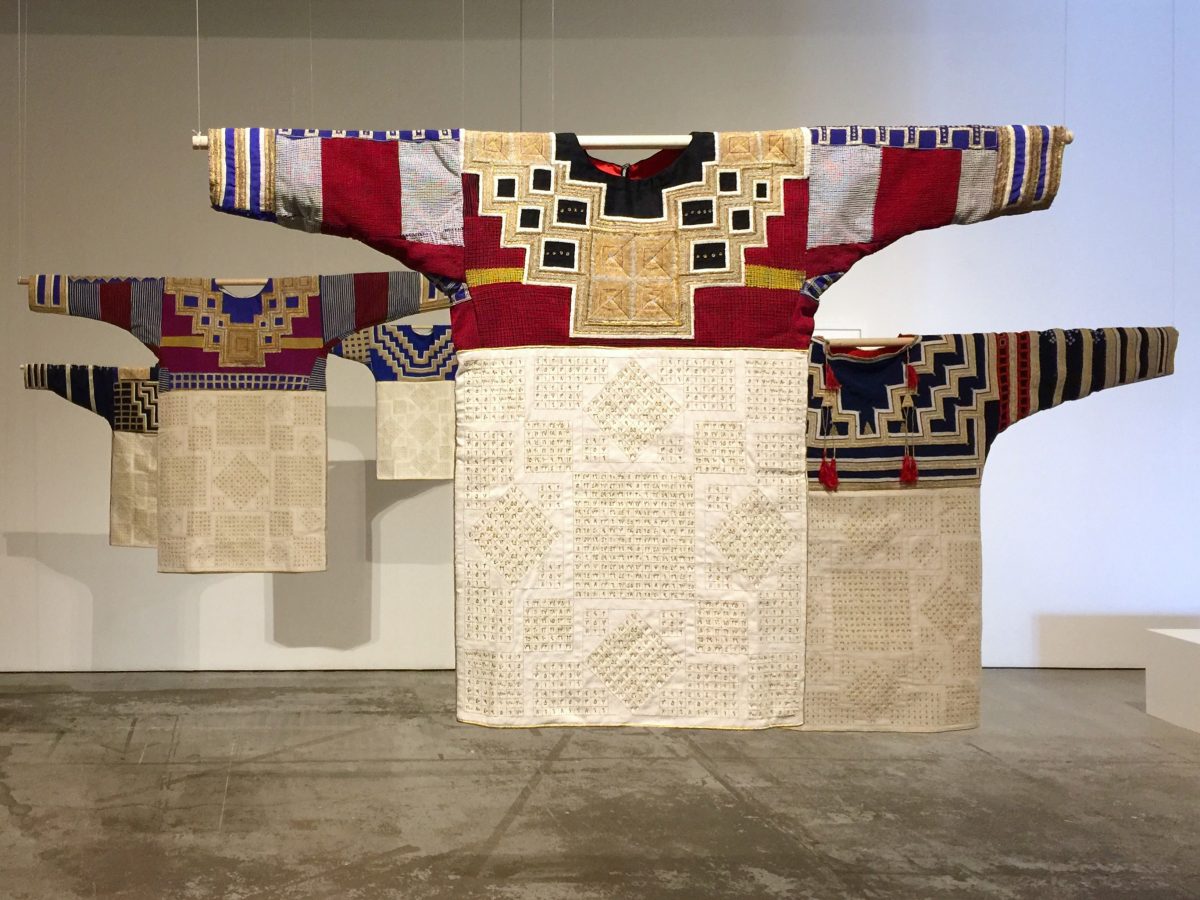
Installation shot of The Five Stages of Grief at the Museum of Contemporary Art Detroit, 2015, antique textile and embroidery on cotton, 85 x 144 cm each


Anger from the Five Stages of Grief, 2015, Antique textile and embroidery on cotton, 85 x 144 cm
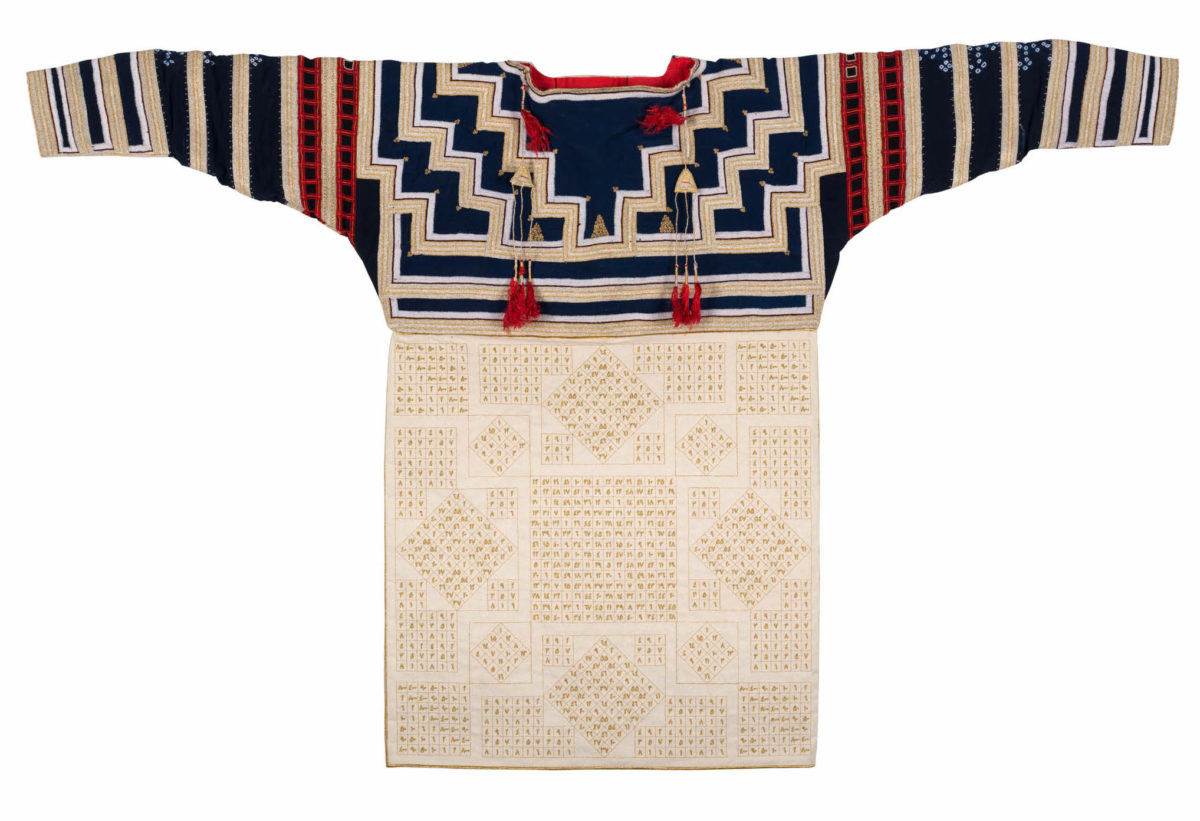
Bargaining from the Five Stages of Grief, 2015, Antique textile and embroidery on cotton, 85 x 144 cm
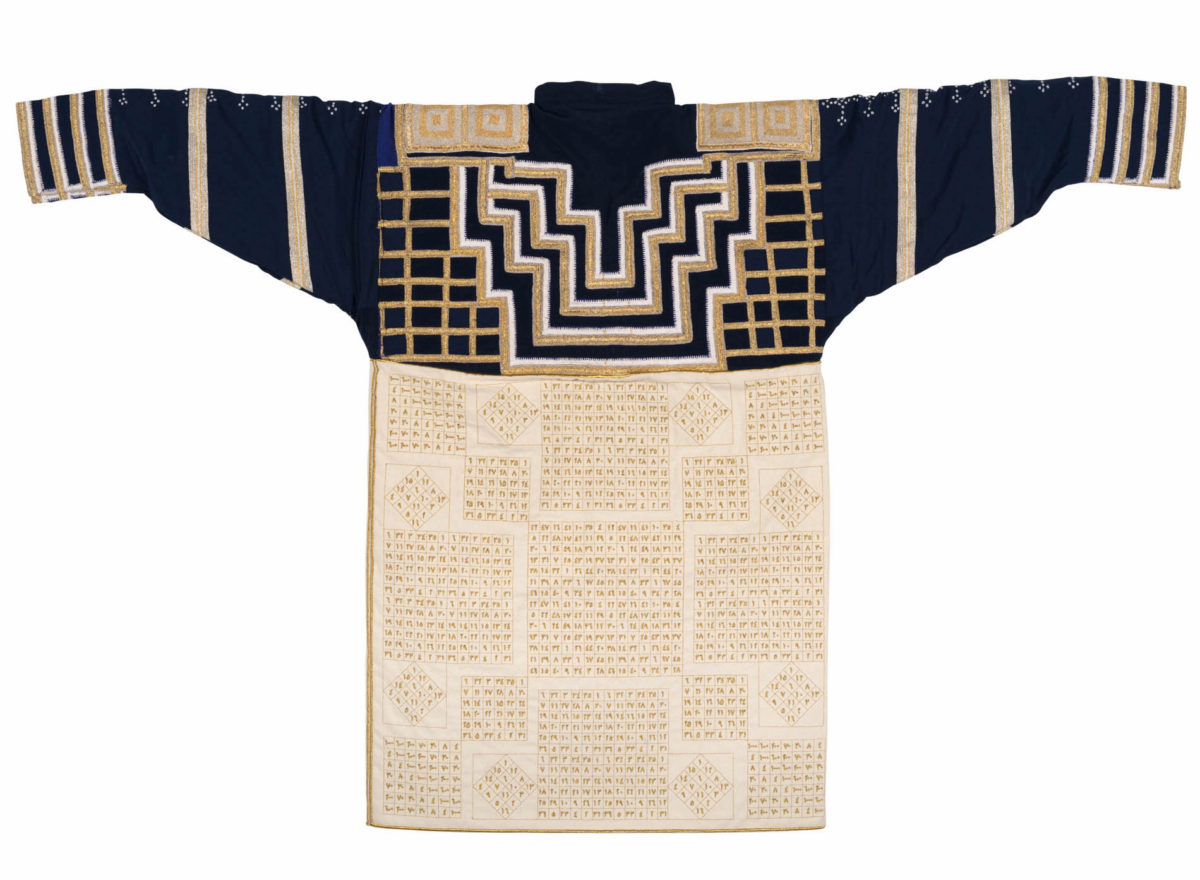
Depression from the Five Stages of Grief, 2015, Antique textile and embroidery on cotton, 85 x 144 cm
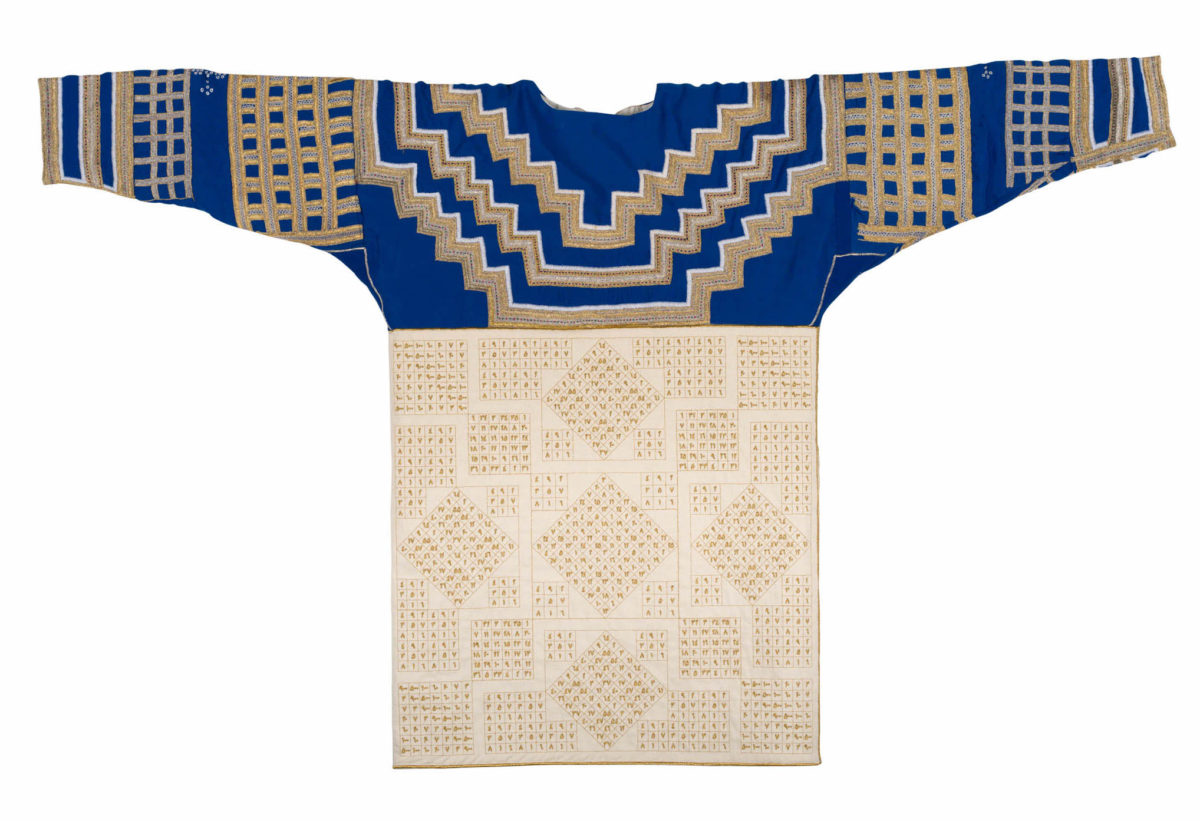
Denial from the Five Stages of Grief, 2015, Antique textile and embroidery on cotton, 85 x 144 cm
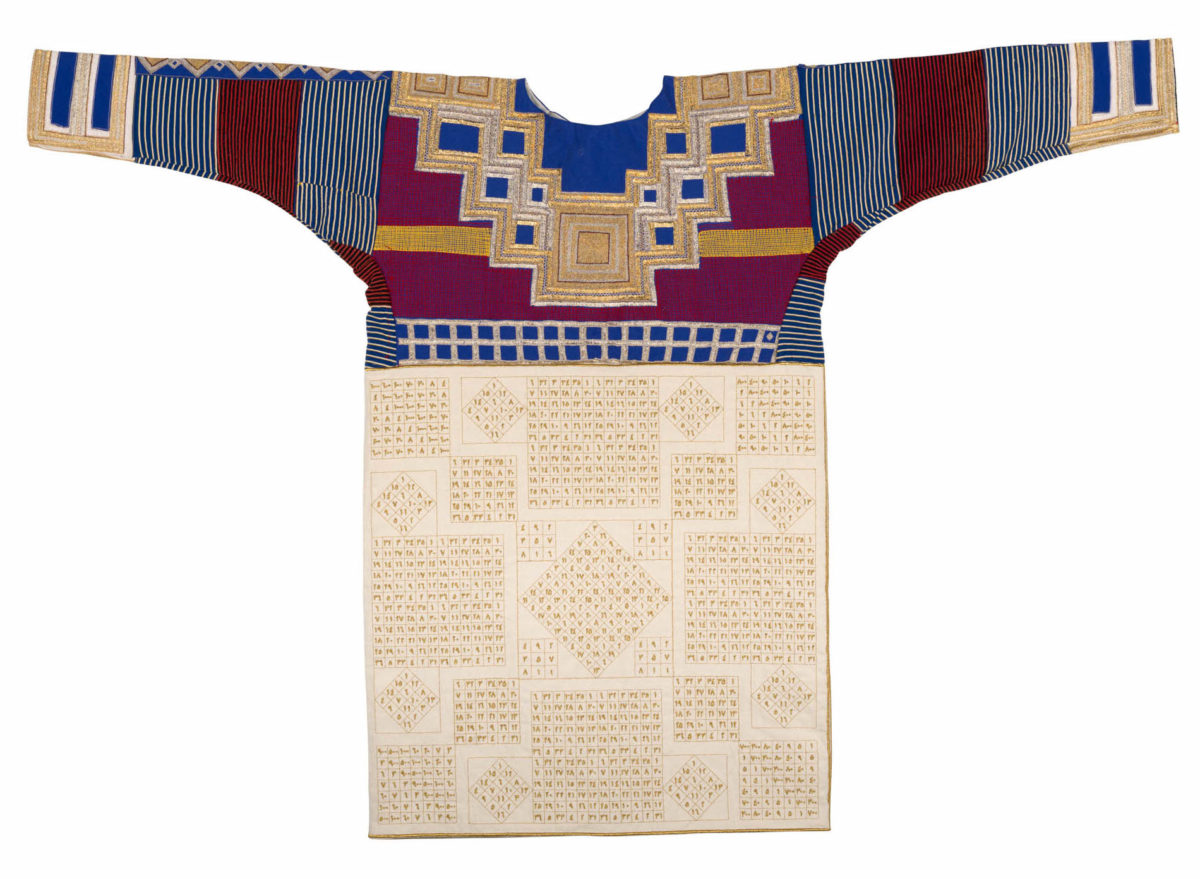
Acceptance from the Five Stages of Grief, 2015, Antique textile and embroidery on cotton, 85 x 144 cm
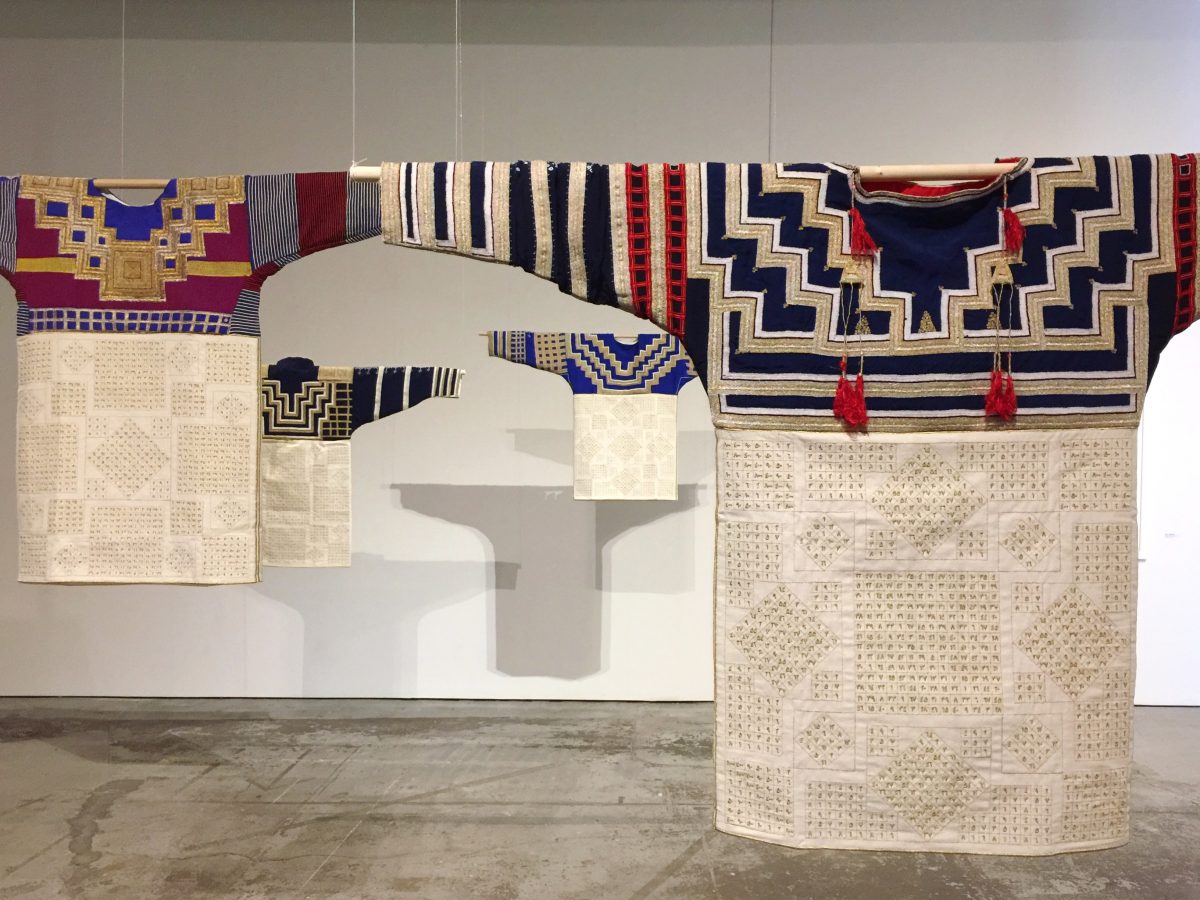
Contributing Text by the Mansoojat Foundation
The costumes of the tribes of the Kingdom of Saudi Arabia are as diverse in cut, style, and embroidery as the regions these tribes inhabit; accordingly each costume is a reflection of the different geographic and climate environment the tribe lives in. However distinct these costumes are, they all share one common feature in that they are an expression of the creativity of the women who designed and created them; the costumes are an amalgam of practicality, elaborate beading, and intricate embroidery. The harsher the environment and the warmer the climate is, as in the case of the desert of the Empty Quarter where the Bani Murrah, a branch of the Bani Yam tribe dwell, the more somber the costume. The dresses of these costumes generally have a wider cut with ample sleeves to accommodate the heat, with hardly any embroidery on them. The more fertile and arable the land, the more vibrant the fabrics used, and the more colourful the embroidery echoing the beautiful local vegetation as in the bright and cheerful costumes of the Southern Region of Asir, and the costumes of the Bani Saad and Bani Malik tribes in the mountainous region of the Hijaz.
Aside from a few environmental idiosyncrasies, the tribal women of Arabia, like women the world over, enjoy wearing their make-up, adorning themselves with jewelry, and perfuming themselves with local herbs and flowers. They are pragmatic and practical and believe in carefully managing their precious resources; when the fabric of their costumes becomes threadbare and worn out, they simply cut out the embroidered segments and attach them back on a newly sewn base dress, time and time again.
The Thaqeef tribe is one of the oldest and noblest tribes of Arabia established fourteen centuries ago, before the advent of Islam, in and around the town of Taif in the mountain range of the Hijaz. Taif was famous for its agriculture, its pastureland and shepherding, and its markets. It was in Taif where the wealthier merchant families of the neighboring holy city of Makkah spent their summers because of its cooler climate. It was the first town, outside of Makkah, the prophet Mohamed (pbuh) took his message of Islam to. In his first attempt, he met with the formidable tribe of Thaqeef who refused to accept his message and fought him in the battle of OKAZ. Eventually, Thaqeef accepted Islam and played an important role in the spreading of its message. The people of Taif and its surroundings farmed its fertile land, growing amongst the variety of fruits and vegetables, pomegranates and grapes that they used to dye their textiles. The Thaqeef tribes have two known styles of costumes, the Nimri thobe of the Hada area and the Mubaqar thobe of the Shafa area. The costumes are similar using alternating bands. The difference between the two styles is in the embroidery, the use of tie-dye, and the use of beading. In the Nimri thobe, the yoke and arm bands are embroidered with gold thread, the small white decorative motif above the hem is tie dyed, and often the dress has an accompanying belt made of metal beads and shells. Whereas the Mubaqar thobe is sewn together in alternating bands, the yoke and sleeve cuffs are embroidered with white and red cotton thread and the hem decoration is applique.
Several tribes of the Hejaz region such as the Thaqeef, Bani Malik and Bani Saad live in the valley of Wadi Mahram close to Taif. Despite living in such close proximity to each other, separated only by a few kilometers, and despite the similarities of their costumes, their clothes are easily and distinctly distinguished from each other by the details in their embroidery and beading. The rich costumes of these particular tribes are only a small illustration of the rich textile and costume heritage of the people of the Kingdom of Saudi Arabia.